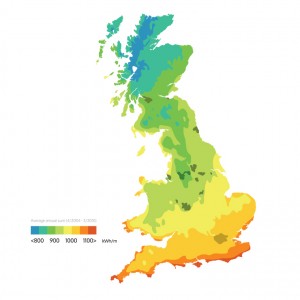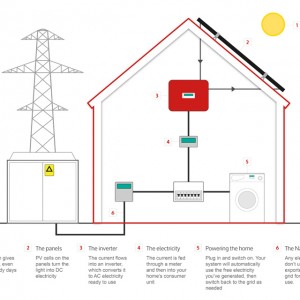How Solar Panels Work
Every solar PV system is made up of several components: solar panels (or ‘modules’), an inverter, a meter and your existing consumer unit. One of the most common questions people want to know is how do solar panels work turning sunlight into AC electricity ready to consume onsite.
How solar panels work
The diagram shows how it’s all connected and helps you understand how solar panels work. Click on the diagram to enlarge.
- The sun gives off light, even on cloudy days.
- PV cells on the panels turn the light into DC electricity.
- The current flows into an inverter, which converts it to AC electricity ready to use.
- The current is fed through a meter and then into your home’s consumer unit.
- Plug in and switch on. Your system will automatically use the free electricity you’ve generated, then switch back to the grid as needed.
- Any electricity you don’t use is exported to the grid for others to use.
Solar radiation
We view solar radiation as daylight and it is this that powers solar photovoltaic panels. However not all locations receive the same amount or concentration of solar radiation, think the strength of the sun in Scotland vs. Spain.

India Irradiation Map
This is the same in the India; some locations receive more irradiation than others. According to PVGIS, European Commission software to estimate energy production from PV panels, the difference in the amount of electricity produced from a 4 kWp system on a south facing 30 degree pitched roof in John O’Groats and Lands End is 840 kWh/year. Click on the map to see an enlarged image.
These calculations take into account the total irradiation received over the course of the year under different conditions. Where direct solar radiation is not blocked by clouds we experience it as sunshine. Where it is blocked by clouds or reflects off other objects, we experience this as diffused light. Diffused light will produce less power than unblocked light, because it has a lower concentration of solar radiation.


